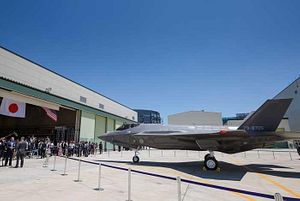On June 20, the Research Committee on Security (Anzen Hosho Chosa-kai) within Japan’s ruling Liberal Democratic Party (LDP) released an interim report with recommendations for Japan’s next Mid-Term Defense Program (MTDP) for fiscal years 2019-2023. The committee, led by former Deputy Minister of Defense Hiroshi Imazu, is aiming to announce its final report by spring of 2018.
Two recommendations in the interim report attracted particular attention. First, the interim report supported one of the key recommendations put forward by the LDP’s Policy Affairs Research Council in March, namely that the Japanese government begin to discuss the option of acquiring “enemy counter-attack capability.” In addition, the report recommended that Japan use NATO countries’ benchmark for defense expenditures —2 percent of gross domestic production (GDP) — as “a point of reference” as Japan considers the appropriate level of spending for its own defense. Other areas that the interim report identified as priorities include the possible acquisition of indigenously-developed military surveillance satellites and the development of offensive cyber capabilities in the Japan Self-Defense Force (JSDF).
In the past, the recommendations put together by the LDP have provided the baseline for discussion as Japan’s government starts a formal process of revising the two critical documents for Japan’s defense planning — the National Defense Program Guidelines (NDPG) and Mid-Term Defense Program (MTDP). When the Abe government revised the NDPG in 2013, for example, the recommendations for the NDPG issued by the LDP in June 2013 had a significant impact not only on the current NDPG and MTDP (both of which were released in December 2013), but also on the way the Abe government has been pursuing its national security policy to date.
Many of the key LDP recommendations put forward in 2013 on national security policy — including establishment of the National Security Council, enactment of the “National Security Basic Law,” and integration of the “Basic Principle of National Defense” into the National Security Strategy — have been already implemented, even if not fully. In addition, many of the recommendations on Japan’s defense posture and programming (such as the introduction of Osprey tiltrotor aircraft and Amphibious Assault Vehicles) have been incorporated into the current MTDP. As such, the interim report put out by the Research Committee on Security this week is significant, as it will most likely serve as the conceptual framework for revising the MTDP for FY2019-2023.
The interim report clearly is driven by mounting concern for the threat that North Korea poses. In addition, the interim report reflects the increasing sentiment among LDP lawmakers that, despite reassurance provided by the United States on its defense commitment to Japan, Tokyo still needs to accelerate efforts to acquire more robust defense capabilities so that it can defend its territories from external threats. Given the “transactional” nature of the Trump administration, in particular, concerns seem to persist about the durability of U.S. commitment. Until recently, for example, there was a concern that President Trump might be willing to condone China’s assertive behavior in the East and South China Seas should China be successful in stopping further provocation by North Korea and bringing it back to negotiations toward denuclearization. Trump’s seeming unwillingness to affirm U.S. defense commitment to its European allies only exacerbated such concerns.
That said, many of the key recommendations in the interim report are not new. Even the reference to Japan’s “counter-attack” capability — potentially the most politically controversial, due to the offensive nature of such a capability — has already been made in the 2013 LDP recommendations. Although the interim report identifies 2 percent as a point of reference for Japan’s appropriate level of defense spending, the general discussion of “we need to spend more on defense” is hardly new.
Indeed, such consistency in the LDP recommendations since 2013 points to the most difficult challenge that Japan will continue to grapple with in its defense policy: fiscal constraint. Japan’s defense budget is roughly one-tenth of the United States’. Although the Abe administration touts that his government has continuously increased Japan’s defense budget since it came to power (which is true), the increase has been so incremental — still within 1 percent of GDP — that it is more accurately described as “recovery” from the preceding decade of defense budget cuts rather than a genuine increase. While the June 20 LDP interim report made a clear departure from the past LDP documents by making specific reference to NATO countries’ defense spending target of 2 percent of GDP, it still is unclear how such a drastic increase can be achieved given Japan’s overall fiscal health. Furthermore, given what Japan has already committed to acquire — F35 fighter jets, Global Hawk drones, Ospreys, and AAVs, to name a few—even a defense spending increase to 2 percent of GDP may not be enough.
Japan cannot merely continue to grow the “wish list” of capabilities it wants to have. There needs to be a serious discussion on whether any given capability will be more cost-efficiently achieved through a new acquisition program or by giving modernization/sustainment upgrades to existing capabilities. If there are research and development programs that are either significantly delayed, or have not produced anticipated results, such programs must be considered for termination. So long as Japan’s defense budget remains constrained one way or the other, it will be necessary to make zero-sum decisions among competing acquisition programs, which is difficult. Rather than adding to the defense “wish list,” LDP lawmakers may consider ways to open discussion on such difficult yet necessary issues for Japan’s future defense programs.

































